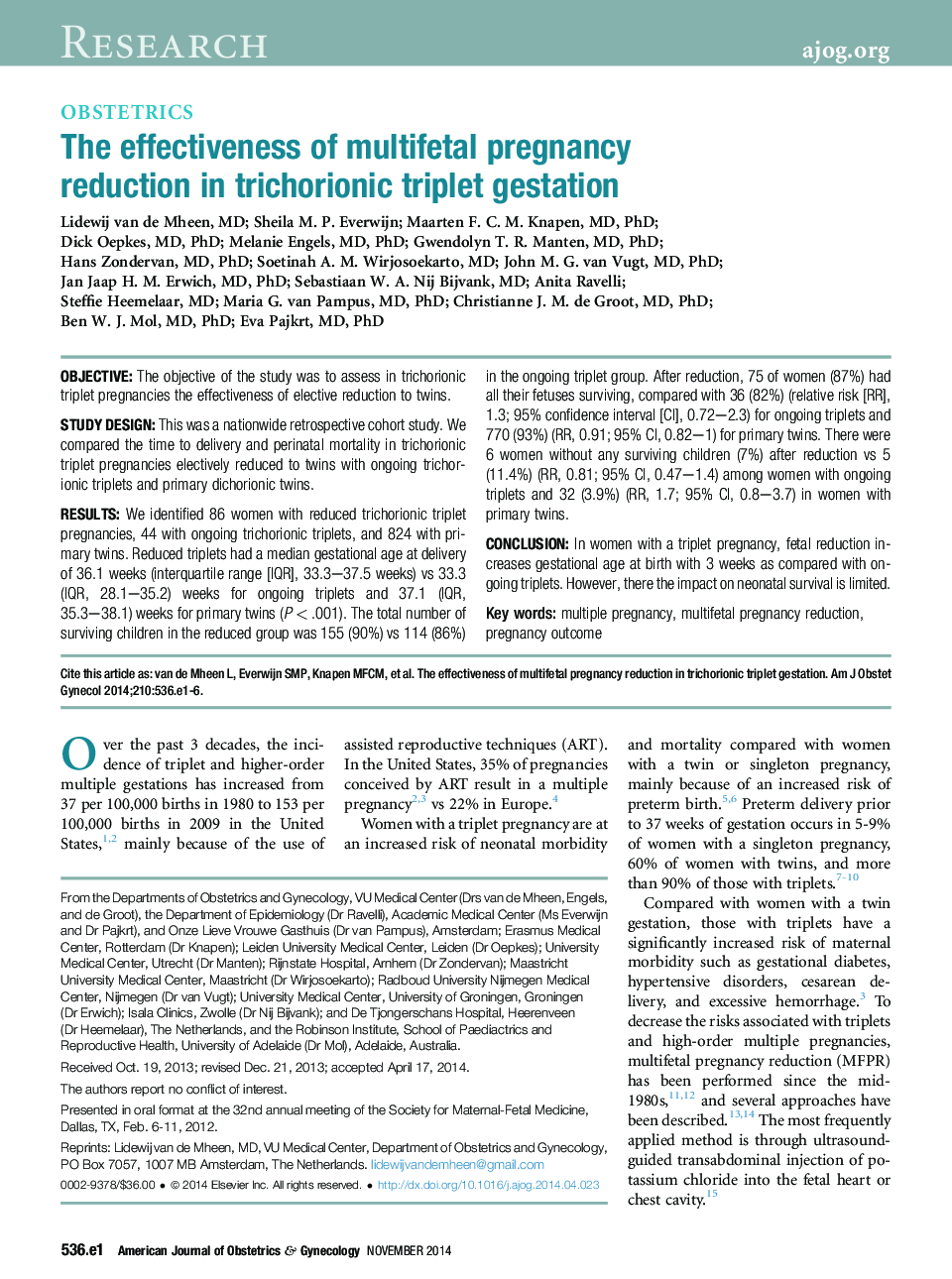| Article ID | Journal | Published Year | Pages | File Type |
|---|---|---|---|---|
| 6145536 | American Journal of Obstetrics and Gynecology | 2014 | 6 Pages |
ObjectiveThe objective of the study was to assess in trichorionic triplet pregnancies the effectiveness of elective reduction to twins.Study DesignThis was a nationwide retrospective cohort study. We compared the time to delivery and perinatal mortality in trichorionic triplet pregnancies electively reduced to twins with ongoing trichorionic triplets and primary dichorionic twins.ResultsWe identified 86 women with reduced trichorionic triplet pregnancies, 44 with ongoing trichorionic triplets, and 824 with primary twins. Reduced triplets had a median gestational age at delivery of 36.1 weeks (interquartile range [IQR], 33.3-37.5 weeks) vs 33.3 (IQR, 28.1-35.2) weeks for ongoing triplets and 37.1 (IQR, 35.3-38.1) weeks for primary twins (P < .001). The total number of surviving children in the reduced group was 155 (90%) vs 114 (86%) in the ongoing triplet group. After reduction, 75 of women (87%) had all their fetuses surviving, compared with 36 (82%) (relative risk [RR], 1.3; 95% confidence interval [CI], 0.72-2.3) for ongoing triplets and 770 (93%) (RR, 0.91; 95% CI, 0.82-1) for primary twins. There were 6 women without any surviving children (7%) after reduction vs 5 (11.4%) (RR, 0.81; 95% CI, 0.47-1.4) among women with ongoing triplets and 32 (3.9%) (RR, 1.7; 95% CI, 0.8-3.7) in women with primary twins.ConclusionIn women with a triplet pregnancy, fetal reduction increases gestational age at birth with 3 weeks as compared with ongoing triplets. However, there the impact on neonatal survival is limited.
